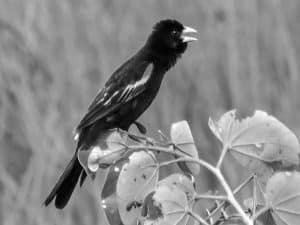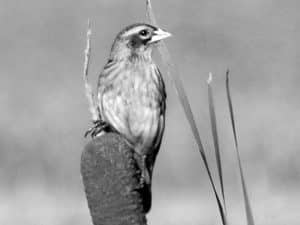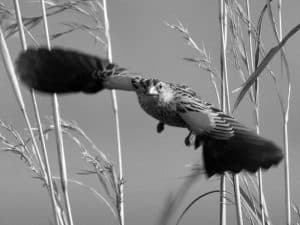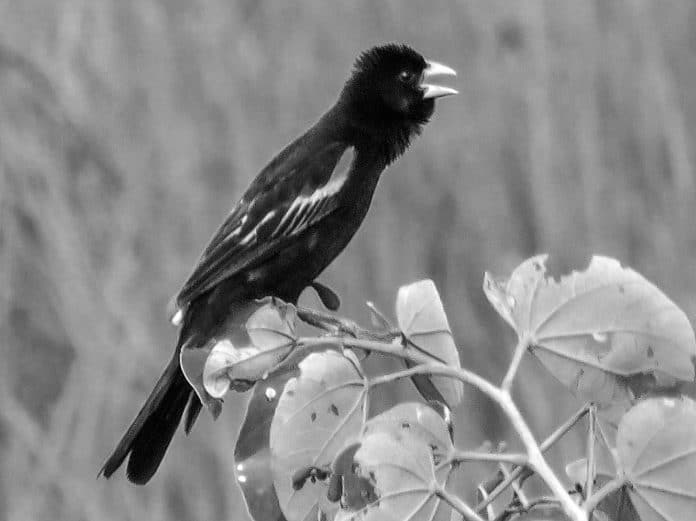Introduction to the Marsh Widowbird
Nestled within the lush wetlands of Tanzania, a captivating bird species known as the Marsh Widowbird (Euplectes hartlaubi) thrives, captivating the hearts of nature enthusiasts and birdwatchers alike. This striking creature, with its distinctive plumage and mesmerizing courtship displays, is a true gem of the African continent. As you embark on your journey to explore the wonders of Tanzania’s avian inhabitants, the Marsh Widowbird in Tanzania is undoubtedly a must-see, offering a glimpse into the remarkable diversity of the region’s wildlife.
Habitat and Distribution of the Marsh Widowbird

The Marsh Widowbird is primarily found in the wetlands and marshes of Tanzania, making its home in the lush, verdant environments that dot the landscape. These birds thrive in areas with abundant water sources, such as rivers, lakes, and swamps, where they can find the necessary resources to sustain their populations. Their range extends across the central and northern regions of Tanzania, with the highest concentrations observed in the country’s protected areas and national parks.
Physical Characteristics and Behavior of the Marsh Widowbird
The Marsh Widowbird is a captivating sight to behold, with its striking plumage and unique physical features. During the breeding season, the male birds display a striking black and yellow coloration, with long, flowing tail feathers that can reach up to three times the length of their body. This dramatic appearance is further accentuated by the bird’s impressive courtship displays, where they engage in intricate dances and vocalizations to attract potential mates.
In terms of behavior, the Marsh Widowbird is a social species, often found in small flocks or colonies, particularly during the breeding season. They are known to be highly territorial, fiercely defending their nesting sites and foraging grounds from potential rivals. These birds are also adept at navigating the dense vegetation of the wetlands, using their agile movements and sharp beaks to forage for a variety of insects, seeds, and other plant matter.
Breeding and Mating Rituals of the Marsh Widowbird
The breeding and mating rituals of the Marsh Widowbird are truly captivating to observe. During the breeding season, which typically coincides with the onset of the rainy season, the male birds engage in elaborate courtship displays to attract females. These displays involve a series of intricate movements, including wing-flapping, tail-fanning, and even aerial acrobatics, all while producing a range of melodious calls and trills.
Once a pair has formed, the female Marsh Widowbird constructs a domed nest, often woven from grasses and reeds, in a secluded area of the wetlands. She will typically lay a clutch of three to five eggs, which both parents will take turns incubating. The chicks hatch after a period of approximately two weeks and are cared for by both the male and female, with the adults providing food and protection until the young birds are able to fend for themselves.
Threats and Conservation Status of the Marsh Widowbird
Despite the Marsh Widowbird’s captivating presence in the wetlands of Tanzania, the species faces a number of threats to its long-term survival. Habitat loss and degradation, driven by factors such as agricultural expansion, urbanization, and unsustainable water management practices, pose a significant challenge to the Marsh Widowbird’s population.
Additionally, the species is vulnerable to the impacts of climate change, which can disrupt the delicate balance of the wetland ecosystems they rely on. Illegal hunting and poaching also pose a threat to the Marsh Widowbird, as their striking plumage and unique behaviors make them a target for collectors and the illegal wildlife trade.
In response to these challenges, conservation efforts have been undertaken to protect the Marsh Widowbird and the wetland habitats it calls home. Organizations and government agencies in Tanzania are working to establish protected areas, implement sustainable land-use practices, and raise awareness about the importance of wetland conservation.
Best Places to Spot the Marsh Widowbird in Tanzania

If you’re eager to catch a glimpse of the magnificent Marsh Widowbird during your travels in Tanzania, there are several prime locations where you can increase your chances of a sighting. Some of the best spots include:
- Rubondo Island National Park: This protected island in Lake Victoria is home to a thriving population of Marsh Widowbirds, as well as a diverse array of other wetland bird species.
- Mkomazi National Park: The wetlands and marshes within this park in northeastern Tanzania are a prime habitat for the Marsh Widowbird, offering excellent opportunities for birdwatching.
- Serengeti National Park: While the Serengeti is renowned for its vast grasslands and iconic wildlife, the park’s wetland areas are also a haven for the Marsh Widowbird.
- Kilombero Valley: This expansive floodplain in southern Tanzania is a biodiversity hotspot, and the Marsh Widowbird can often be spotted in the area’s lush wetlands.
Tips for Photographing the Marsh Widowbird
Capturing the beauty of the Marsh Widowbird through photography can be a truly rewarding experience. Here are some tips to help you get the most out of your photographic encounters:
- Patience and stealth are key – these birds can be skittish, so approach slowly and quietly to avoid startling them.
- Time your visits during the breeding season (typically the rainy months) to increase your chances of seeing the birds in their stunning mating plumage.
- Use a long telephoto lens to get close-up shots without disturbing the birds’ natural behavior.
- Be mindful of the lighting conditions, as the Marsh Widowbird’s vibrant colors are best captured in soft, diffused light.
- Consider using a hide or blind to get unobstructed views and capture the birds’ natural movements.
Other Bird Species Found in the Wetlands of Tanzania
While the Marsh Widowbird may be the star of the show, the wetlands of Tanzania are home to a diverse array of other bird species that are just as captivating. Some notable species you may encounter include:
- Goliath Heron: One of the largest heron species in the world, with a striking blue-grey plumage.
- African Spoonbill: A distinctive wading bird with a unique, spoon-shaped bill.
- Glossy Ibis: A stunning, iridescent-colored ibis species that thrives in the wetland environments.
- Malachite Kingfisher: A vibrant, jewel-toned kingfisher that can often be spotted perched along the water’s edge.
- African Openbill: A unique stork species with a distinctive beak adaptation for feeding on freshwater mollusks.
The Importance of Wetland Conservation in Tanzania

The wetlands of Tanzania, which serve as the primary habitat for the Marsh Widowbird and countless other species, play a vital role in the ecological balance of the region. These ecosystems provide essential services, such as water filtration, flood control, and carbon sequestration, while also supporting the livelihoods of local communities through activities like fishing and agriculture.
However, the continued threats to these wetlands, including habitat degradation and unsustainable resource extraction, have put their long-term viability at risk. Recognizing the importance of these fragile environments, conservation efforts in Tanzania have focused on protecting and restoring the country’s wetlands, ensuring that they can continue to thrive and support the rich biodiversity that calls them home.
Conclusion: Appreciating the Beauty of the Marsh Widowbird in Tanzania
As you explore the captivating wetlands of Tanzania, the Marsh Widowbird stands out as a true jewel of the region’s avian diversity. From its striking plumage and mesmerizing courtship displays to its role in the delicate balance of the wetland ecosystems, this remarkable bird species offers a glimpse into the wonders of the natural world.
By immersing yourself in the habitat of the Marsh Widowbird, you’ll not only have the chance to witness its beauty firsthand, but you’ll also contribute to the ongoing efforts to conserve these vital wetland environments. Consider planning a birdwatching or wildlife photography tour in Tanzania, and let the Marsh Widowbird inspire your appreciation for the natural world.

































